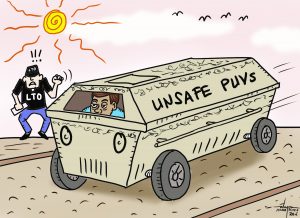My friends were teasing me that I must have gone mad not being able to access Facebook, Google, and Viber while in China for 15 days. Actually, it was not as horrible as I thought. In fact, it did me some good.
Not being online all the time allowed me to be more present in real life. It made me interact more with the people in front of me and made me more aware of what was happening around me. It helped me focus on what was going on in my surroundings at the same time allowed my imagination to wander and explore. Plus it relieved my carpal tunnel syndrome.
Only when I could not get notifications did I realize how stressful it was to be bombarded with them all the time. My mobile phone’s default mode is actually on silent mode because of this constant stream of notifications that stress me out. But even when it’s on silent, it vibrates each time I get a notification so I may not hear the bell but I can still feel or sense the buzz. That still stresses me out. So not feeling that buzz while in China was such a relaxing experience. A break I did not know I needed.
I am actually one of those late social media adaptors among my friends. I did not find the idea of being online appealing because I did not want several people to have access to me anytime they wanted. I grew up an only child of a solo parent so I was not used to interacting with more than three people at once. Also being the only child, I get all the attention in our tiny family so I tend to crave being left alone most of the time.
It was my friend, Mayie Sencio (God bless her soul), who forced me to be on Facebook. Mayie, Neil, and I have been traveling the world together ever since we turned 40. Mayie was our designated photographer (she had a professional camera) and she made us sign up on Facebook because that was the only way we could see and share all the travel photos she took.
So at first, Neil’s and my Facebook friends were just limited to those who were in our travel photos. But then Mayie had a lot of Facebook friends who were also our friends in real life and they sent us friend requests, too. Mayie would guilt-trip us into accepting all friend requests saying that rejecting them would be anti-social and hurtful so we got peer pressured into it. Long story short, I now have about 2,000 friends on Facebook. Neil has significantly less than that because he is more resistant to any kind of pressure among the three of us.
After Facebook, I got on Twitter. Why? Because my cousin who shared my teenage crush on John Cusack told me he was active on it. I got to read his rants against the status quo on a daily basis, which made me like him even more. Lloyd Dobler (his character on “Say Anything”) has grown up and remained consistent in real life (even though he misspells a lot of words often).
I also discovered that I can follow just about anyone on Twitter without sending a friend request. That excited me because I just want to passively read content, not necessarily engage in it. Less exhausting than Facebook where you are expected to like and comment because, well, you are friends. You are supposed to interact with friends. Yes, peer pressure.
I liked Twitter before when you were limited to only 140 characters. I liked the discipline and how it developed your creativity to construct a brief yet meaningful and engaging sentence. It was very entertaining for a person like me who loves words and the many exciting ways they can be put together. But then my Twitter feed would start to have content I did not choose to follow. I would be inundated with suggestions of stuff I might like. It stopped being entertaining for me and became more annoying so I am not on it as often as before. I am on Twitter (I still do not like calling it X) once in a while to get breaking news from around the world and to see what the trending topics are online.
I got on Instagram because I was told that’s where the nice images are, and inspiring quotes you can borrow to have content on your other social media accounts. My fellow Davaoeño Gen Xers will know what I mean when I say that Instagram is the new version of those posters we loved collecting from Velasco Bookstore in the 1980s.
But when Instagram was bought by Facebook, it was like having two Facebooks with different formats. It’s too much work now. And your video uploads get classified under reels and I am still figuring out how to stop it from automatically doing that. I just want it to be a simple post on my page to share for those who are my friends who like following me and not for every content creator out there.
And then there’s TikTok, which I got into during the pandemic like the rest of the world. What I like about TikTok is how it makes it so easy to make online content. I am able to make and share videos faster with little effort. But if you are not careful, TikTok can suck so much of your time.
Compared to most people online, I am what you might call a lazy, moderate social media user. Yes, the moderation is because of the laziness. My default mode is slow and meandering. I like taking my time and marinating things. Slow cooking rather than pressure cooking.
When on social media, I am more of a consumer rather than a producer of content. I have to be really inspired (or coerced) to share something (online or offline). So I am glad when my millennial and Gen Z friends post our videos and photos “at the moment (atm)” and just tag me because if they waited for me to post them, they would be throwback posts by then. I also only engage online with people who are actively in my life offline, too.
Social media platforms are built to grab attention, generate as much new content as possible, increase engagement, and get as many followers and subscribers as you can. That kind of environment makes me anxious (the same reason I do not like to be a candidate for election) so I am glad my being lazy and slow protect me from going mad in this economy.


